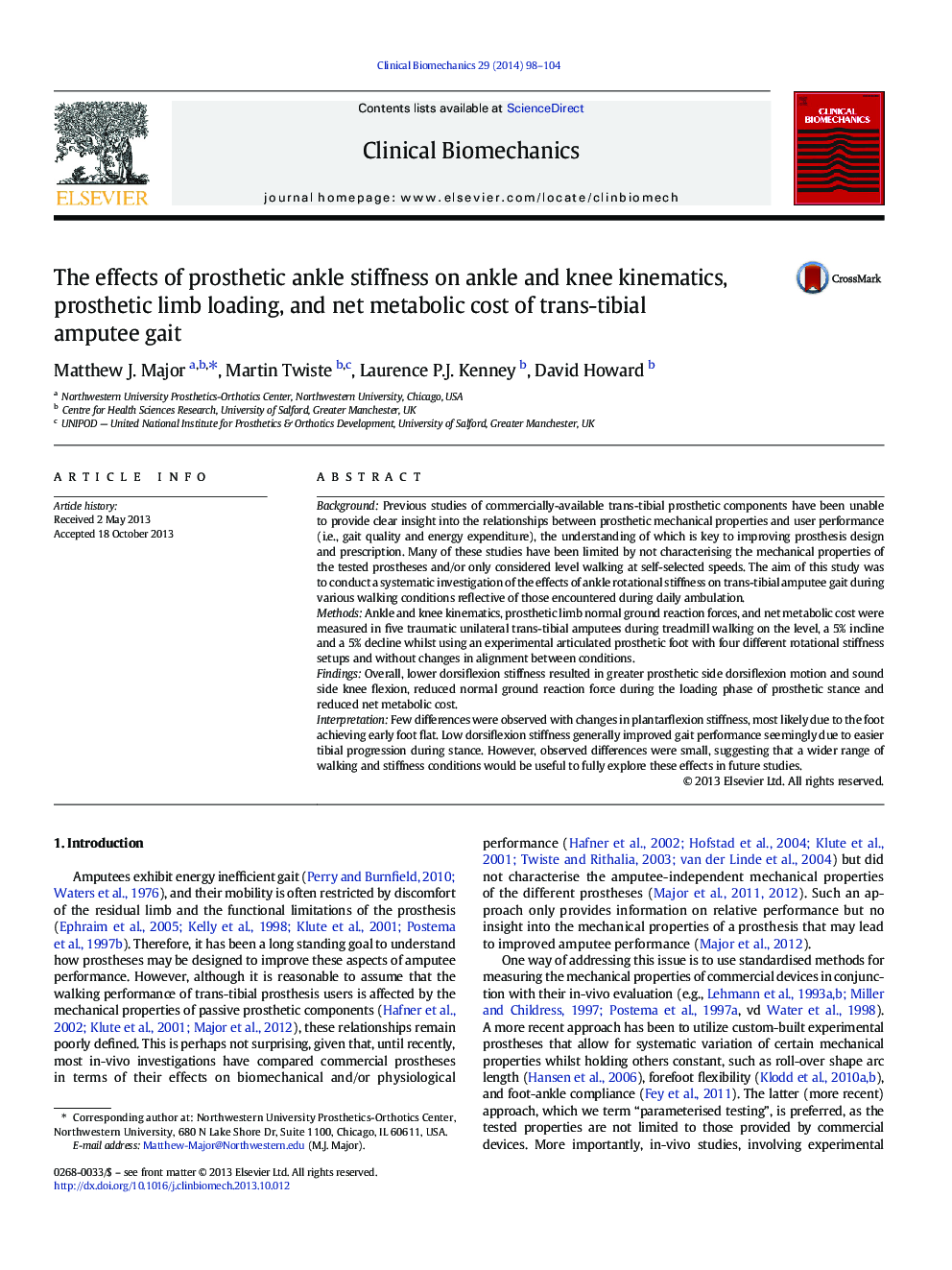| Article ID | Journal | Published Year | Pages | File Type |
|---|---|---|---|---|
| 4050419 | Clinical Biomechanics | 2014 | 7 Pages |
BackgroundPrevious studies of commercially-available trans-tibial prosthetic components have been unable to provide clear insight into the relationships between prosthetic mechanical properties and user performance (i.e., gait quality and energy expenditure), the understanding of which is key to improving prosthesis design and prescription. Many of these studies have been limited by not characterising the mechanical properties of the tested prostheses and/or only considered level walking at self-selected speeds. The aim of this study was to conduct a systematic investigation of the effects of ankle rotational stiffness on trans-tibial amputee gait during various walking conditions reflective of those encountered during daily ambulation.MethodsAnkle and knee kinematics, prosthetic limb normal ground reaction forces, and net metabolic cost were measured in five traumatic unilateral trans-tibial amputees during treadmill walking on the level, a 5% incline and a 5% decline whilst using an experimental articulated prosthetic foot with four different rotational stiffness setups and without changes in alignment between conditions.FindingsOverall, lower dorsiflexion stiffness resulted in greater prosthetic side dorsiflexion motion and sound side knee flexion, reduced normal ground reaction force during the loading phase of prosthetic stance and reduced net metabolic cost.InterpretationFew differences were observed with changes in plantarflexion stiffness, most likely due to the foot achieving early foot flat. Low dorsiflexion stiffness generally improved gait performance seemingly due to easier tibial progression during stance. However, observed differences were small, suggesting that a wider range of walking and stiffness conditions would be useful to fully explore these effects in future studies.
